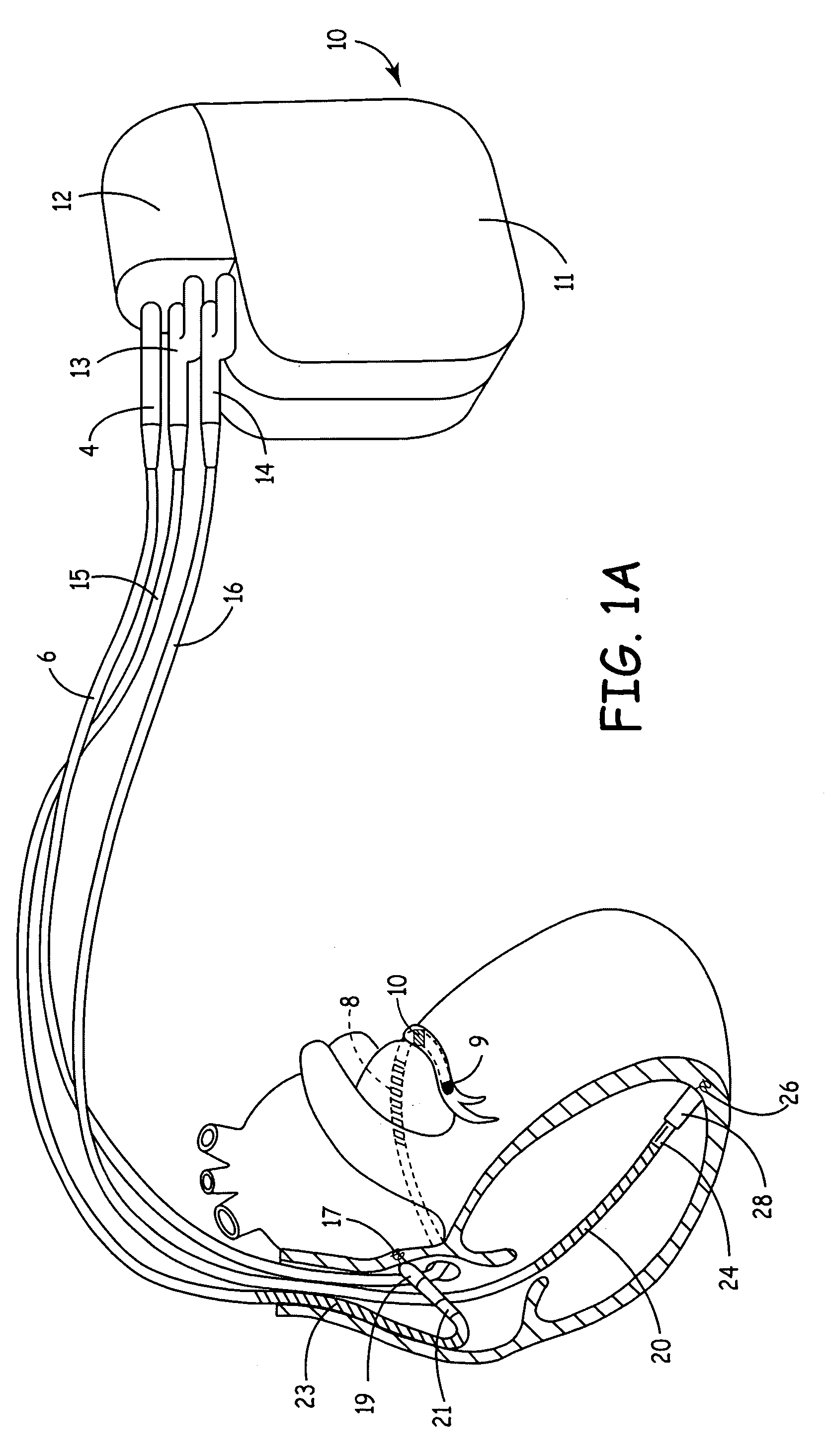Cardiac pacing modality having improved blanking, timing, and therapy delivery methods for extra-systolic stimulation pacing therapy
a pacing therapy and pacing modality technology, applied in the field of cardiac stimulation devices, can solve the problems of limited amount of calcium released in response to extra systole, insufficient to cause normal mechanical contraction of the heart, and insufficient stimulation of myocytes, so as to reduce the role of rate in cardiac reserve, reduce the responsiveness to activity, and enhance the functional state
- Summary
- Abstract
- Description
- Claims
- Application Information
AI Technical Summary
Benefits of technology
Problems solved by technology
Method used
Image
Examples
Embodiment Construction
[0040]The present invention is directed toward providing an implantable system for securely and effectively delivering an electrical stimulation therapy to achieve augmented stroke volume by providing a carefully timed pacing stimulus to a chamber of a heart following an intrinsic or evoked depolarization. Herein the therapy is referred to as extra-systolic stimulation (ESS) therapy.
[0041]FIG. 1A is an illustration of an exemplary implantable medical device (IMD) in which the present invention may be implemented. IMD 10 is coupled to a patient's heart by three cardiac leads 6, 15, 16. IMD 10 is capable of receiving and processing cardiac electrical signals and delivering electrical stimulation pulses for ESS therapy and may additionally be capable of cardiac pacing, cardioversion and defibrillation. IMD 10 includes a connector block 12 for receiving the proximal end of a right ventricular lead 16, a right atrial lead 15 and a coronary sinus lead 6, used for positioning electrodes fo...
PUM
 Login to View More
Login to View More Abstract
Description
Claims
Application Information
 Login to View More
Login to View More - R&D
- Intellectual Property
- Life Sciences
- Materials
- Tech Scout
- Unparalleled Data Quality
- Higher Quality Content
- 60% Fewer Hallucinations
Browse by: Latest US Patents, China's latest patents, Technical Efficacy Thesaurus, Application Domain, Technology Topic, Popular Technical Reports.
© 2025 PatSnap. All rights reserved.Legal|Privacy policy|Modern Slavery Act Transparency Statement|Sitemap|About US| Contact US: help@patsnap.com



